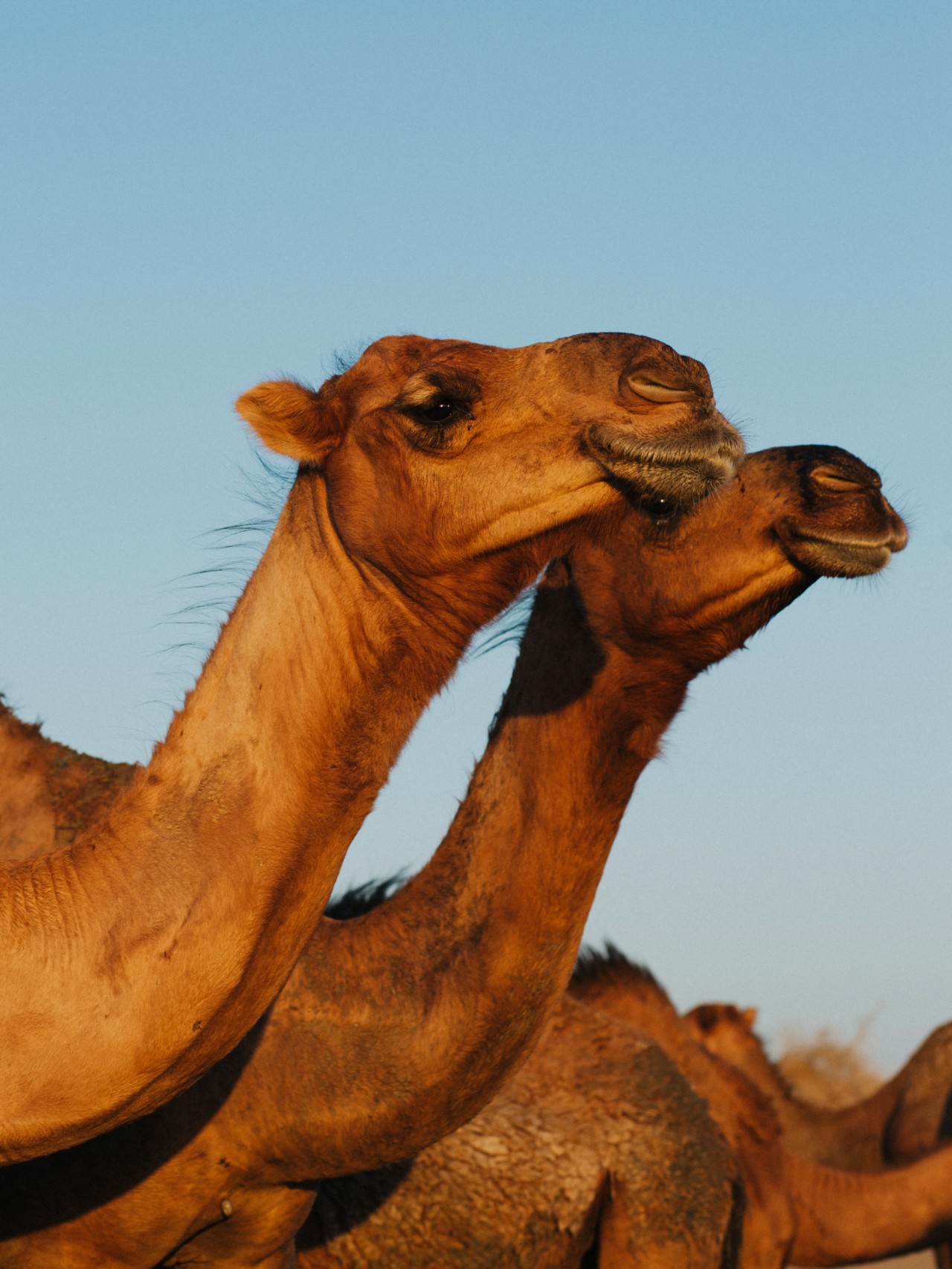

Photograph by Sima Dehgani / Connected Archives
words by willow defebaugh
“It is we who live in the extreme environments.”
As undeniably harsh as it may be at times, life is nothing if not resilient. From crushing depths to dizzying heights, freezing cold to blazing heat, organisms have adapted remarkable means to surviving in the most challenging conditions imaginable. Some of these creatures appear as tough as the environments they live in; others are entirely unassuming, a testament to the fact that strength can be found in the most unlikely places—especially at the extremes.
Few animals are as familiar with resiliency as those that have developed means to stand the heat and dryness of the desert. Camels can live in temperatures of 120 degrees Fahrenheit and survive losing more than a quarter of their total body weight in water. Their humps are fat deposits which not only provide nutrients when food is scarce, but shield them from the harsh sun with tissue that is slow to conduct heat. Meanwhile, their extremely efficient kidneys and intestines allow them to lose little water to waste. They know that every drop of life is worth saving.
At the other extreme, organisms that have learned to live in frigid temperatures are equally equipped to endure. In Antarctica, temperatures frequently drop as low as -40 degrees Fahrenheit. Emperor penguin colonies cope by huddling en masse in order to share body heat and minimize exposure to the inhospitable elements. These penguins will take turns on the perimeter and then be brought into the center to ensure that no individual bird bears the burden of protecting the colony alone. They withstand life-threatening conditions by cooperating and coming together.
Life in the depths of the ocean comes with crushing pressure—and creatures that can withstand it. Yeti crabs exist 7,000 feet below sea level where no sunlight reaches. They spend their time in the coldest waters of the world, dotted by some of the hottest thanks to hydrothermal vents that blast boiling water up to 750 degrees Fahrenheit. Too close to these vents and the yeti crabs will burn up, too far and they will freeze. They use their hairy arms to harvest bacteria that live around these vents for food, finding sustenance in the balance between extremes.
Far above the ocean floor, life soars against other odds. At high altitudes, low pressure equates to less oxygen, necessitating adaptations to do what they can with what’s available. Having been observed cresting Mount Everest at nearly 30,000 feet, the bar-headed goose is one of the world’s highest-flying birds. Perhaps more impressive is that they can climb 20,000 feet in just seven to eight hours. Large lungs, specialized muscles, and high concentrations of blood vessels that circulate oxygen around the body allow these birds to reach such great heights.
Only one creature can survive in all of these extremes, making it the most resilient organism on Earth: tardigrades. Often called water bears, these micro-animals are nearly indestructible, capable of withstanding even outer space. They do this thanks to a unique adaptation triggered by extreme stress and dehydration, causing them to drop their metabolic rate to nearly zero and curl into a ball of suspended animation. They can stay in this state for years or even decades, revived when exposed to water and livable temperatures. Sometimes, resilience means rest.
I believe in the resilience of the human spirit. And while nature proves time and time again that life can persist even in the harshest extremes, that doesn’t mean it should have to. Whether faced with the demands of the climate crisis or the brutality of war, my heart is with all human and non-human life that is put in such a position. I urge us to remember that our resilience lies in our ability to adapt, resist binary extremes, practice communal and self-care, and hold firm that all beings have a right to life.
Life at the Extremes